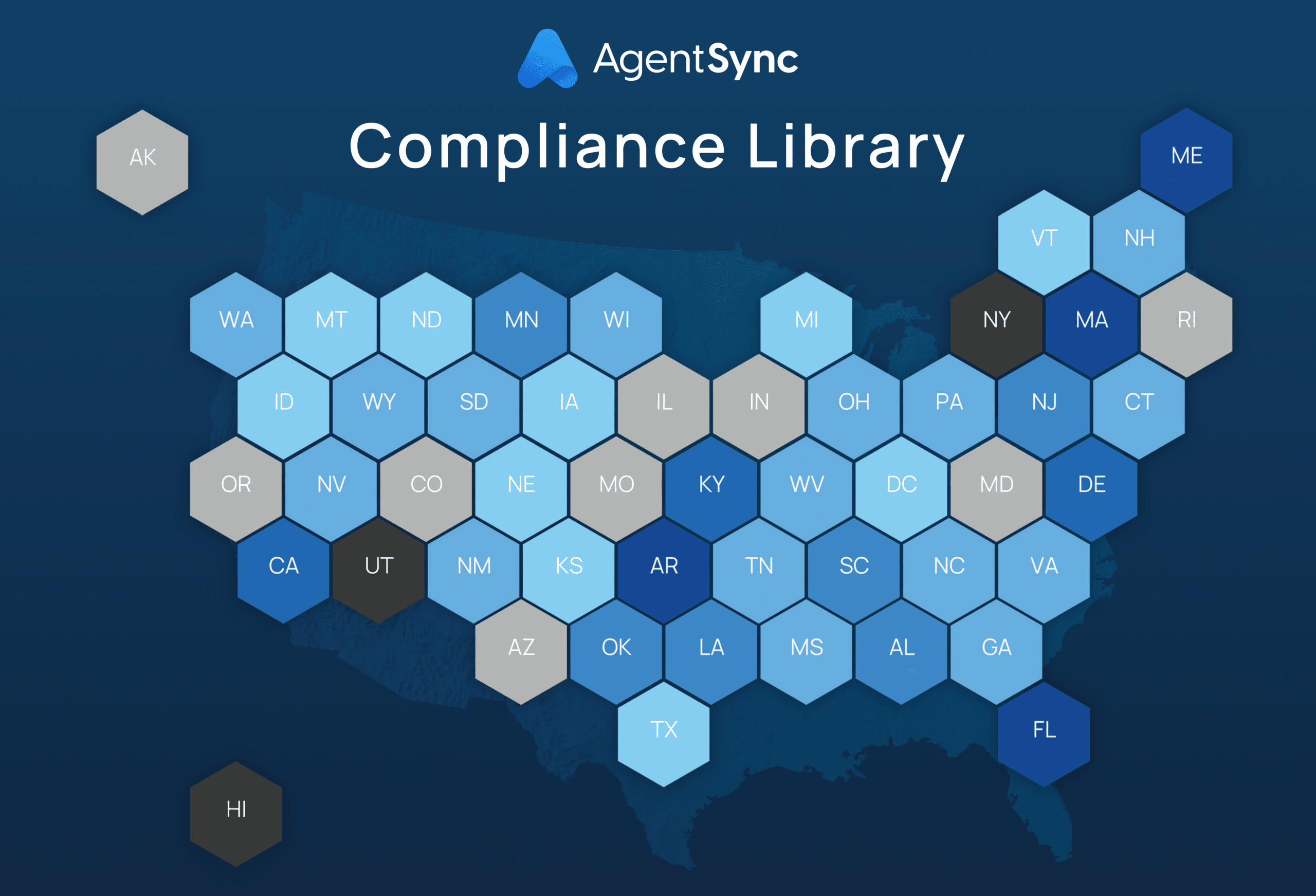

State-by-state variations of laws, compliance protocols, industry transparency, and general regulatory culture can lend one the impression that keeping up with industry changes is a little bit like herding cats. So, what better way to wrangle some of the more localized insurance news than in a Regulatory Roundup?
On an ongoing basis, in no particular order or rank, we’re wrestling the various regulatory changes, compliance actions, and commissioner decisions into our roundup. As a disclaimer: There’s a lot going on at any given time in these here United States, so this isn’t a comprehensive picture of state-level action by any means. Think of it as, instead, a sampler platter of regulation.
Also important to note: If we’re recapping interpretations of legal decisions, this is some armchair insurance speculation and not at all legal advice. If you need legal advice, get a lawyer.
California Gov. Newsom and Commissioner Lara call for new regulations to ease P&C market
The California executive branch at the end of September 2023 hoped to lure property and casualty insurers back to support the homeowners market of the state with announcements of upcoming changes to premium pricing and other reforms.
Gov. Gavin Newsom and Insurance Commissioner Ricardo Lara both spoke at a joint press conference, stressing their commitment to market reforms. The governor released a proclamation announcing both causes for market concerns and suggesting priorities for legislators. Commissioner Lara released a list of executive actions his office will take.
“We are at a major crossroads on insurance after multiple years of wildfires and storms intensified by the threat of climate change. I am taking immediate action to implement lasting changes that will make Californians safer through a stronger, sustainable insurance market,” said Commissioner Lara. “The current system is not working for all Californians, and we must change course. I will continue to partner with all those who want to work toward real solutions.”
The governor’s proclamation sets up the dilemma nicely, with many “whereas”es outlining facts like:
- FAIR plan participation in the state has multiplied tenfold since 2018
- Reinsurance premiums have risen by 30-50 percent
- The two largest carriers in the state have stopped writing new policies
- Other insurers composing 36 percent of policies on the market announced plans to limit new coverage
Ultimately the governor calls on legislators to, among other things, “Tailor the rate approval process to account for all factors necessary to promote a robust, competitive insurance marketplace, including through potential revisions to the way catastrophe risks and insurer costs are accounted for.”
Commissioner Lara’s executive actions aim to shore up the state’s FAIR Plan and make premiums both affordable for consumers and profitable for insurers. Among the measures:
- Requiring insurers to commit to writing 85 percent of their coverage in “distressed” areas
- Pricing wildfire premiums based off a consumer’s actual property risk, enabling individual insureds to take actions around their property to decrease risk and premium cost
- Allowing insurers to price California-specific reinsurance costs into premium calculations
The explicit hope of state officials is to lower the risk of the FAIR Plan. At 3 percent of the market, the FAIR Plan could face bankruptcy in the event of one widespread catastrophic event. Gov. Newsom and Commissioner Lara are aiming for reforms that will make the P&C market sustainable and competitive for insurers, homeowners, and business owners alike.
Colorado explores statewide parametric insurance to prepare for catastrophic events
A Colorado House of Representatives bill this year directed the Division of Insurance to explore the factors that make insurance expensive in these modern times, as well as ways the state can innovate and reduce the costs to consumers.
In that vein, the DOI has called on insurers to help gather information on government-level parametric policies. Crediting other countries around the world, Colorado cites models where municipalities and regional governments purchase parametric policies in the event of catastrophic disasters. The policies are set based on what percent of the region is affected by an event, and to what degree. Insurers limit their losses with these policies, yet they serve as a guaranteed source of funds in the event of a large weather or other disaster event, helping a city or region recover faster.
The state is seeking input from homeowners as well as insurers to determine if importing this overseas insurance measure is a practical, feasible way to handle large loss events.
“Based on our conversations with the industry and the research that we’ve conducted,
we do not believe that such a product currently exists,” said the Colorado DOI in a request for comment, “As a result, we are interested in comments from insurers that write parametric policies
regarding: (1) whether there is interest in creating this type of product, and (2) the
expected premium for such a product.”
Colorado launches risk management framework for life insurance data
If this roundup feels a little Colorado-centric, it’s not because of AgentSync’s homestate bias, it’s because Colorado’s Division of Insurance has been spittin’ regulation!
Effective Nov. 1, 2023, Colorado released a new requirement for life insurers that use external consumer data and information sources – essentially, for any life insurers that use data outside their own longitudinal internal information. The requirement is meant to protect consumers from unfair racial discrimination in algorithms and predictive models, and requires insurers to establish a governance and risk-management framework.
Colorado Regulation 10-1-1 requires, among other things, an oversight board and documentation, documentation, documentation, from documenting the sources and inventory of data to formalizing processes to detect disparate outcomes of a carrier’s algorithms and predictive modeling as well as prescriptions for resolving consumer complaints.
Other state regulatory changes
California legal changes mean that, effective Jan. 1, 2024, the state will administer insurance exams in Simplified Chinese, Vietnamese, and Korean in addition to the current Spanish or English exams. Starting July 1, 2024, the state will also administer the exam in Tagalog, and will track certain pass/fail metrics to help administrators determine the effectiveness and equitability of the state’s language offerings.
Colorado is forming a rule to accompany new state regulations rolling into effect Jan. 1, 2024, which requires insurers to allow a special enrollment period (SEP) for pregnant people who are uninsured or underinsured.
Connecticut issued a bulletin requiring any insurance carriers in the admitted or nonadmitted market that plan to discontinue lines of business in the state to notify the DOI in writing 60 days prior.
Delaware issued a bulletin to inform all insurance carriers in the state that a new law extends the period for the state to review proposed rate changes, requiring insurers to file earlier and wait longer. The law, according to the bulletin, was in response to the increased filings that have pushed wait times and led to insurers prematurely raising rates without state approval. The state also passed pet insurance regulation that makes insurers responsible for training producers on their pet insurance products before allowing them to sell on the insurer’s behalf.
Idaho is finalizing rulemaking for updated fees, implementing the Managed Care Reform Act, disability insurance rules, bail agents rules, corporate governance disclosures, life and health reinsurance rules, and rules related to producer fee disclosures and fiduciary fund guidance. The DOI heard comments Sept. 27, 2023, and will announce final rules at a later date.
Illinois announced the state’s company appointment renewal period for limited lines producer licenses, at $50 per appointment renewal. Invoices will be available on NIPR from Nov. 2, 2023, to Jan. 2, 2024.
Louisiana launched the Louisiana Fortified Homes Program Oct. 2, 2023, giving up to 3,000 applicants up to $10,000 to strengthen their homes against storms with a FORTIFIED Roof standard.
Oklahoma Commissioner Glen Mulready issued a bulletin reminding Medicare supplement providers that state regulation effective Sept. 1, 2023, requires that they waive underwriting and preexisting condition exclusions for applicants who have been continuously enrolled in MedSup coverage that’s similar or more robust than the coverage they’re applying for through the carrier.
Maryland announced the addition of Aetna CVS Health to its individual health market, Maryland Health Connection, in the 2024 plan year. This marks the fourth provider on the state’s marketplace, which topped 185,000 enrollees in the last year. In addition, the state announced it approved healthcare premium increases to the tune of 4.7 percent, impacting approximately 229,000 Marylanders.
Washington Insurance Commissioner Mike Kreidler announced the approval of health insurance premium rate increases for 2024. While insurers asked for an average of 9.11 percent, the state approved an 8.94 percent increase. The state noted about 192,000 people have coverage through the health care exchange, and about 75 percent of them receive subsidies. The Office of the Insurance Commissioner also released a pre-publication draft for proposed revisions to the state’s prior authorization rules for health plans. Washington will also join the hoards of states adopting the NAIC’s annuity best interest model, but first the state has a public hearing on the rule at 9 a.m., Oct. 24, 2023, Tuesday via Zoom.
While these points of interest aren’t comprehensive, our knowledge of insurance producer and variable lines broker license and compliance maintenance is. See how AgentSync can help make you look smarter today; head over to the Compliance Library and wrastle up some state-by-state regulation and more jurisdictional updates.

